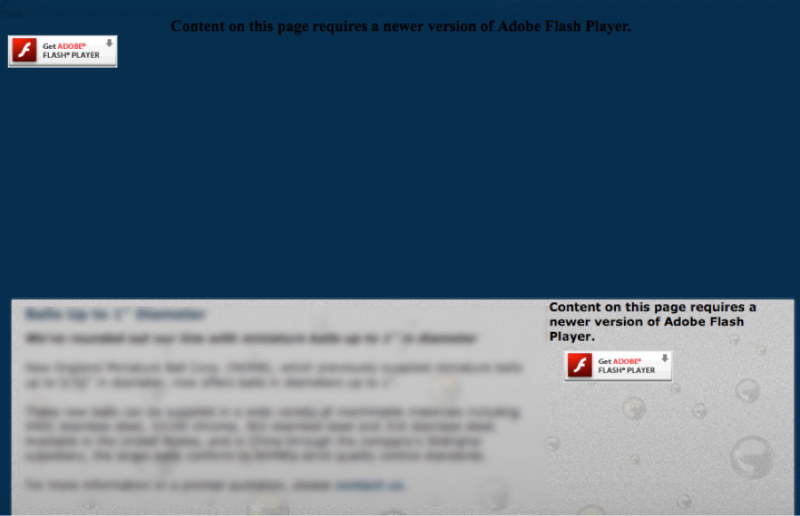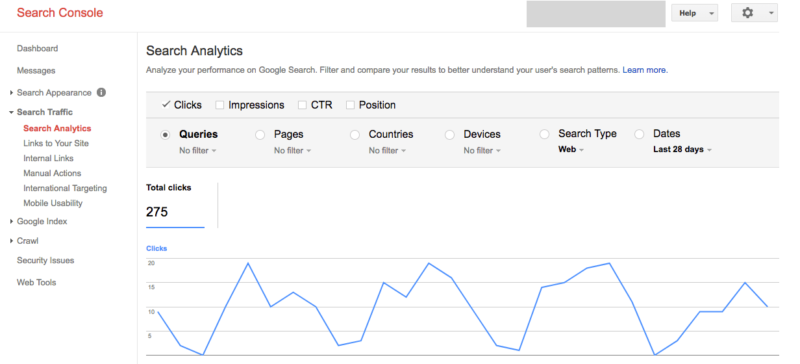Why consistent marketing can pay big results for small industrial manufacturers
Sometimes the key to success in SEO and online marketing is just being consistent. In her beginner-focused how-to, columnist Dianna Huff provides some tactical advice for those managing digital marketing for small manufacturing websites.

“Dianna, you’ll never reach your goal if you don’t consistently monitor your diet!” my trainer chastised me after my weigh-in and measurement. “You can’t out-exercise a bad diet!”
In that instant, I understood exactly what she was saying — because “consistent” is the term my company uses to describe how our small industrial manufacturing clients need to approach their marketing.
By “consistent,” I mean doing something on a regular basis that gets you closer to your sales/inquiries/ business growth goals. The beauty of consistency, applied to any endeavor, is that small actions can lead to huge improvements and better results over time.
Consistent marketing is akin to regularly working out and monitoring your food intake. If you don’t consistently monitor what you eat and/or stick to a workout schedule, nothing will change. But if you do — wow, watch out! (One of our clients, for example, applied consistent marketing to get a triple-digit percentage increase in inquiries in the last nine months — as well as a corresponding increase in sales.)
In this piece, I cover three marketing tactics that, if performed by small manufacturers on a consistent basis, can lead to big results over time.
Tactic #1: Perform regular website maintenance
I won’t mince words: I look at dozens of small industrial manufacturing websites every week, and many of them are poorly designed. Indeed, most are years out of date. The reasons for this are many, from lack of resources to lack of knowledge.
Even worse is that often, things on the website are broken — from forms to images to links. It’s also not unusual to find sites (or site elements) built in Flash on older websites. Flash, which Adobe has announced they won’t support after 2020, doesn’t work in all browsers (and especially on iOS devices), and it requires a plugin — one that not everyone either uses or keeps updated.

Figure 1: Website page built using Flash.
All websites require ongoing maintenance. You have to make sure things are working as intended and that your existing content/messaging is up to date. Otherwise, it becomes apparent to users that your site hasn’t been touched for months (or years). And that lack of attention reflects poorly on your business. Users might even wonder if you still exist!
The following are some of the items that need to be checked on a regular basis:
- Software. WordPress and other content management systems get updated regularly; if you’re not running the latest update, you increase the risk of your website being hacked.
- Plugins. These need to be updated regularly as well. Plugins sometimes break after a CMS update, and outdated plugins can get hacked.
- Images. It pays to look through your website periodically to ensure all images are working and displaying properly.
- Forms. Every so often, fill out the forms on your website to ensure email notifications are going to the correct person/email account. This includes RFQ, contact forms and newsletter subscription forms.
- Google Analytics. Regularly log into Analytics to ensure traffic hasn’t dropped precipitously and that all pages are being tracked/accounted for.
- Google Search Console. Ditto for this tool, which can tell you if Google is having problems with your website.
- Links. Click all links to ensure they’re going to “live” pages.
- Title and meta tags. It pays to ensure that tags relating to SEO have been properly written and optimized. (Search Console will tell you if you have missing or duplicate tags.)
Website maintenance can require some expertise. Thus, it may be something you choose to outsource. But even if you do outsource your website maintenance, it’s still a good idea to do some checking on your own to make sure everything is shipshape.
Next, you need to make sure your existing website content is current. As your business changes and evolves, those changes should be reflected in your website copy. Here are some of the most commonly overlooked content areas:
- Team bios. Have you added a new member to your senior management team? Has someone left? Have responsibilities changed?
- Certifications/SDS. All certifications (such as ISO or ITAR) and Safety Data Sheets should be up to date; PDFs of these materials allow people to easily download them.
- Service/product descriptions. This is where things get the most outdated; a company changes its services or products over time, but the website copy may not reflect these changes if not updated regularly.
- Events. It’s never a good sign to see a tradeshow listed on your home or events page that took place three, six or 12 months ago.
TIP: To ensure you make time to go through your website, schedule it into your calendar once a month.
Tactic #2: Add content to your website on a consistent basis
The secret to creating new content consistently is twofold:
- Be realistic about how much your team can create.
- Get very strategic about what you create and how you use it.
For our small manufacturing clients, we generally start with a keyword search and/or use data from Search Console (below) or AdWords. We analyze what people are searching for and use this data to determine the content strategy.

Figure 2: Search query data report, Search Console
Although we’re not creating a whole lot of content, what we do create, we leverage as much as possible.
For example, say you discover that people are searching for information about a particular kind of ball bearing. You might start by writing an FAQ, Tech Tip or Application Note about that particular kind of ball bearing; you can add this content to your Resources or Technical Information section on your website.
Then you can repurpose this information for your e-newsletter (see Tactic #3 below) and link to the page on your website. You can also use the same information to create a PPC landing page for a campaign. as well as update the information on the existing product page if you have one. (If you don’t have one, consider creating it.)
What I like about this approach is that it uses the same principle as saving money over time: If you put a little bit into your savings account every month, your balance will grow. Similarly, if you create one or two new pieces of content every month, by the end of the year, you’ll have 12 to 24 new pages — plus all kinds of new inquiries as Google indexes this information, and then people find it and contact you.
TIP: Make sure your images are optimized for search. I cannot tell you how many manufacturers I’ve spoken to who say, “Oh, I usually start with an image search when I’m looking to source something.” If you optimize your images and your new pages, you can often get a double whammy on the search engine results page (SERP) by showing up in both the organic listings and image results, the way Sailrite did. (If you do PPC, this can allow you to show up three times in the same SERP.)

Figure 3: SERP showing listings + image search
Tactic #3: Market your website — All. The. Time.
Keeping your website up to date and consistently adding more content to it will help with search engine optimization.
But SEO alone won’t cut it. You also need to consistently market your website. The problem here is twofold: either a company starts a campaign (such as social media or an e-newsletter) but then neglects it or the company does nothing at all (which leads to the “broken website” problem addressed in Tactic #1).
Because budgets and resources are generally tight for small manufacturers, we recommend starting off with something relatively easy, such as an e-newsletter.
Newsletters are still a great choice for small manufacturers. According to MailChimp’s 2017 email marketing benchmarks, newsletters in the manufacturing sector still see a healthy 21.74 percent open rate and a 2.33 percent click rate. (These numbers are comparable to what we’re seeing with our manufacturing clients who use e-newsletters.)
So yes, people still do open and read newsletters — especially if they’re well done.
When you create your newsletter, use multiple stories/content pieces that drive people back to the website — i.e., the content you created in Tactic #2. Over time, you should see inquiries and website traffic increase bit by bit. (Sometimes, this traffic will come from newsletter issues sent months ago as people catch up on email.)
Once you have the newsletter in place — and you’re consistently sending it out — then you can add another digital marketing tactic, such as social media or AdWords.
In conclusion…
By giving your website and your marketing consistent attention over time, you ensure your website stays updated, and that it hasn’t been hacked or infected.
Consistent marketing also results in a beautiful thing: an increase in relevant inquiries over time (i.e., what we refer to as “inquiries that are in the ballpark”). These relevant inquiries can grow from one or two per month to dozens per month — that’s the power of consistent marketing.
Contributing authors are invited to create content for Search Engine Land and are chosen for their expertise and contribution to the search community. Our contributors work under the oversight of the editorial staff and contributions are checked for quality and relevance to our readers. The opinions they express are their own.
Related stories